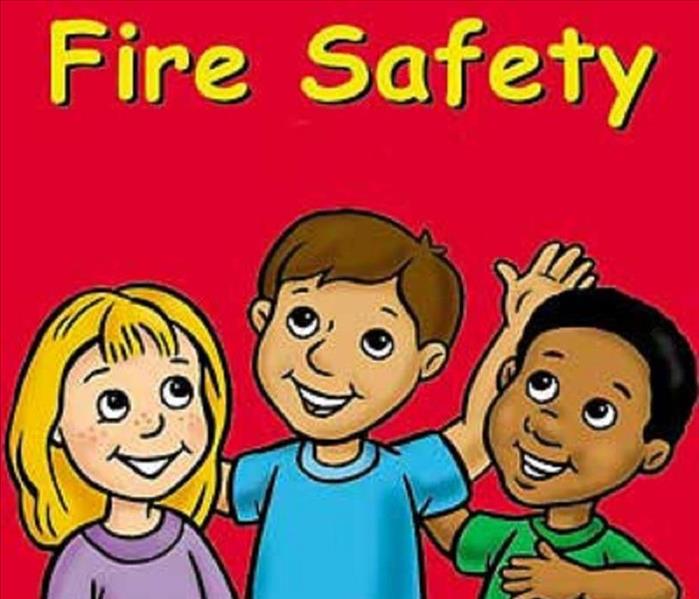Fire safety for kids: Prepare, practice and prevent
3/19/2018 (Permalink)
PREPARE – Reduce the risk of fires in your home by eliminating hazards.
PRACTICE – Practice a home fire evacuation plan and general fire safety practices.
PREVENT – The Unthinkable.
It takes about two minutes for a small flame to turn into a life threatening fire and just five minutes for a fire to engulf an entire home, according to Ready.gov. Putting in place fire prevention measures to avoid a home fire altogether is the best fire safety practice.
While prevention isn’t a 100 percent guarantee, there are many precautions you can take in your home to reduce fire hazards and keep your kids safe. Follow these recommendations to address common household fire hazards and protect your family from a home fire catching in your home:
Don’t overload electric outlets, extension cords or wall sockets. Stringing multiple extension cords together in order to plug several appliances into the same outlet is a bad idea.
Reduce clutter. This is especially important in the kitchen, where dish towels, sponges, paper towels, and other items can catch fire if placed too close to a hot stove. But it’s also important in all areas of your home – blankets and clothing piled up against a heat run, for instance, can also pose a fire hazard. As a rule, keep combustible materials at least three feet from the stove burners, and never leave cooking unattended.
Don’t leave burning candles unattended. A candle can fall for a multitude of reasons, lighting carpets, curtains or furniture ablaze. This can also happen if a candle is allowed to burn down too low, causing its glass container to break and freeing the flame.
Hide all matches and lighters out of reach of young children. Even responsible children can accidentally light a fire if they encounter a lighter or match and try it out of curiosity. It’s best to place these items well out of reach of kids.
Always have multiple working fire extinguishers conveniently located in your home. You should always have a fire extinguisher in the kitchen, for instance, as it’s a common location for fires to occur from cooking and other hazards.
Replace circuit breakers with arc-fault circuit interrupters. These gadgets pick up on electrical arcs, usually caused by poor insulation or loose wires or connections, and halt them before they lead to fires.
Replace electrical outlets. Faulty electrical outlets can be a source of home fires, too. If plugs seem to be loose or fall out, the blades inside may have loosened. Loose blades create excessive heat, which can lead to fires.
Give your clothes dryer proper maintenance. Cleaning the lint catcher thoroughly with every load is just the starting point. Over time, lint and other particles can build up in the vent system or dryer cabinet (where the heating element is located) and potentially cause fires. Having your dryer cabinet professionally cleaned every two years can also reduce potential fire risks.
Keep an eye on garage safety. Heated garages pose another threat to your home’s safety. If your garage contains a workshop, where even a thin layer of sawdust is present, and a heating appliance – whether a portable kerosene heater, wood stove, coal stove or anything else – there’s a fire risk. Sawdust is easily combustible, so employ a heavy-duty vacuum like a Shop Vac to remove as much sawdust as possible.
For more information check out https://www.safety.com/kids-fire-safety/






 24/7 Emergency Service
24/7 Emergency Service